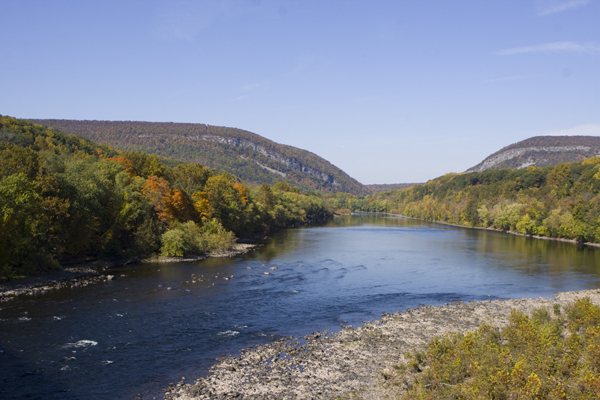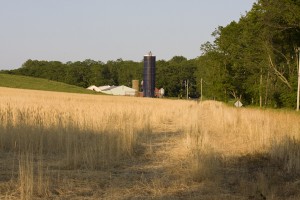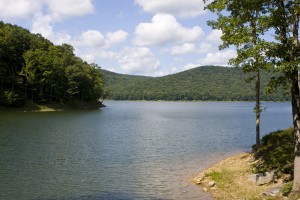Christie Environmental Policy Founded on Lies and Falsehoods
“A cynic is a man who knows the price of everything and the value of nothing”
~~~ Oscar Wilde

A review of Governor Christie’s Environmental Protection Transition Report reveals that his environmental policy is based on lies, exaggerations, and unsupported and/or flawed premises.
Like a doctor misdiagnosing a disease, the cure is sure to do more harm than good.
So let’s begin our review today with a single focus on the economic claims. In future posts, we will analyze the policy and program recommendations.
The Report starts right out and forms its foundation on a flat out lie. With absolutely no evidence, the Report makes this radical claim:
“The Department has driven economic investment out of this State often with policies that, ironically, provide little or no environmental benefit. […]
… [DEP has] retarded both environmental progress and economic growth,
The Report provides no data – not even one “horror story” anecdote – to support a claim that any investment has been driven out of the state by DEP.
In fact, overwhelming evidence supports the conclusion that reckless private sector speculation has caused the economic collapse. The Wall Street driven collapse has caused the financial crisis and recession, not DEP or environmental protections.
The dual economic and state fiscal/budget crises have nothing to do with DEP or environmental regulation (in fact, there are DEP permits issued for thousands of projects that are not being built, as per the recent Permit Extension Act, legislation introduced back in 2008 because
An increasing number of permits are scheduled to expire due to inability of the banking, real estate and construction industries to obtain financing in the current economic downturn.
Because the Christie Transition Report recommends economic analysis, in terms of economic benefits, below I dust off the findings of a recent DEP economic study. Here is the DEP news release announcing $200,000 study.
For some odd reason, DEP managed to keep the final Report, issued in July 2006, a secret. I could find no press releases or any evidence that the Report’s findings were incorporated in any DEP policies, regulations, or permit decisions. The Final Report was quietly posted on the Division of Science and Research’s website. Despite score of press releases posted by DEP, the only place I could find Report mentioned was in July 31, 2007 Corzine press release:
“New Jersey has preserved over 1.3 million acres of open space and farmland. In addition to the environmental impact of preserving open space, a recent DEP report valued New Jersey’s “natural capital,†which includes open space, at $20 billion annually.â€
Land cover data show that we are losing this natural capital. According to a May 1, 2007 DEP Report,
“The results indicate that New Jersey is losing open space at the rate of 15,000 acres a year, roughly the same rate as reported between 1986 and 1995.â€
Christie’s DEP Commissioner nominee Bob Martin supports “good cost benefit analysis†– so here’s a starting point Bob:
First look at DEP annual “investments†– here is OLS analysis of DEP FY 2009-2010 budget: OLS Analysis
As I wrote on November 4, 2009:
“taxpayers pay less than 2 tenths of 1% of the State budget to fund the operating budget of DEP. This implements the polluter pays policy. There are no taxpayer savings to be had by further slashing DEP budgets. ONLY 24.7% of DEP’s FY 2009 $230 million operating budget, just $56.81 million, is paid by taxpayers from the state general fund. (read DEP budget here);
Then consider the economic benefit findings below – which don’t include public health benefits of DEP pollution control and environmental quality programs – and calculate the ROI on that small DEP investment!
Executive Summary
Our results are summarized below; all figures are 2004 dollars. The figures include only ecosystem services; they do not include ecosystem or abiotic goods or secondary economic activity related to a given ecosystem.
1. Wetlands provided the largest dollar value of ecosystem services: $9.4 billion/yr for freshwater wetlands and $1.2 billion/yr for saltwater wetlands. The most valuable services were disturbance regulation ($3.0 billion/yr), water filtration ($2.4 billion/yr), and water supply ($1.3 billion/yr) for freshwater wetlands, and waste treatment ($1.0 billion/yr) for saltwater wetlands. (Disturbance regulation means the buffering of floods, storm surges, and other events that threaten things valued by individuals or by society as a whole.)
2. Marine ecosystems provided the second-largest dollar amount of ecosystem services: $5.3 billion/yr for estuaries and tidal bays and about $389 million/yr for other coastal waters, including the coastal shelf out to the three-mile limit. (It should be noted that the fish and shellfish obtained from these ecosystems are covered elsewhere in this report and are not included in these totals.) Nutrient cycling (i.e., waste dilution and removal) was the most important service provided by marine ecosystems, with a value of $5.1 billion/yr.
3. Forests cover the largest area of any ecosystem type in New Jersey, and because of that the total value of the ecosystem services they provide is one of the highest at $2.2 billion/yr, excluding the value of timber. Habitat services are currently the most important of these services ($1.4 billion/yr); other important services provided by forests include water supply and pollination (about $238 million/yr each) and aesthetic and recreational amenities ($179 million/yr).
4. Urban green space covers relatively little of New Jersey but has a relatively high dollar value per acre and provides an estimated $419 million of ecosystem services annually, principally aesthetic and recreational amenities ($361 million/yr). Ecoservice values for other types of urban land and for barren land were not investigated in this study.
5. Beaches (including dunes) provided by far the highest ecoservice value per acre; their small area limited their annual ecoservice value to about $330 million, mainly disturbance regulation ($214 million/yr) and aesthetic and recreational amenities ($116 million/yr).
6. Agricultural land includes both cropland (estimated at $78 million/yr of ecosystem services) and pastureland (estimated at $45 million/yr). These values relate solely to the services provided by farmland, mainly habitat services from cropland ($75 million/yr) and waste treatment services from pasture land ($26 million/yr). They do not include the value of the food provided by farms, which is covered elsewhere.
7. Open fresh water and riparian buffers provided services with an estimated annual value of $66 million and $51 million respectively, mainly water supply ($64 million/yr) and aesthetic and recreational amenities ($51 million/yr). Another part of this report covers the value of water as an ecosystem good.
The total value of these ecosystem services is $19.4 billion/year. If we exclude studies which were not peer-reviewed and/or which did not report on original research, the result is a lower estimate of $11.6 billion/year. However, this exclusion makes it impossible to estimate values for a number of ecosystems and/or ecoservices, and we believe that the higher figure better represents the value of the services provided by New Jersey’s  ecosystems. If the excluded studies are added back but weighted at 50%, the total value of ecosystem services would be $15.5 billion/year.



